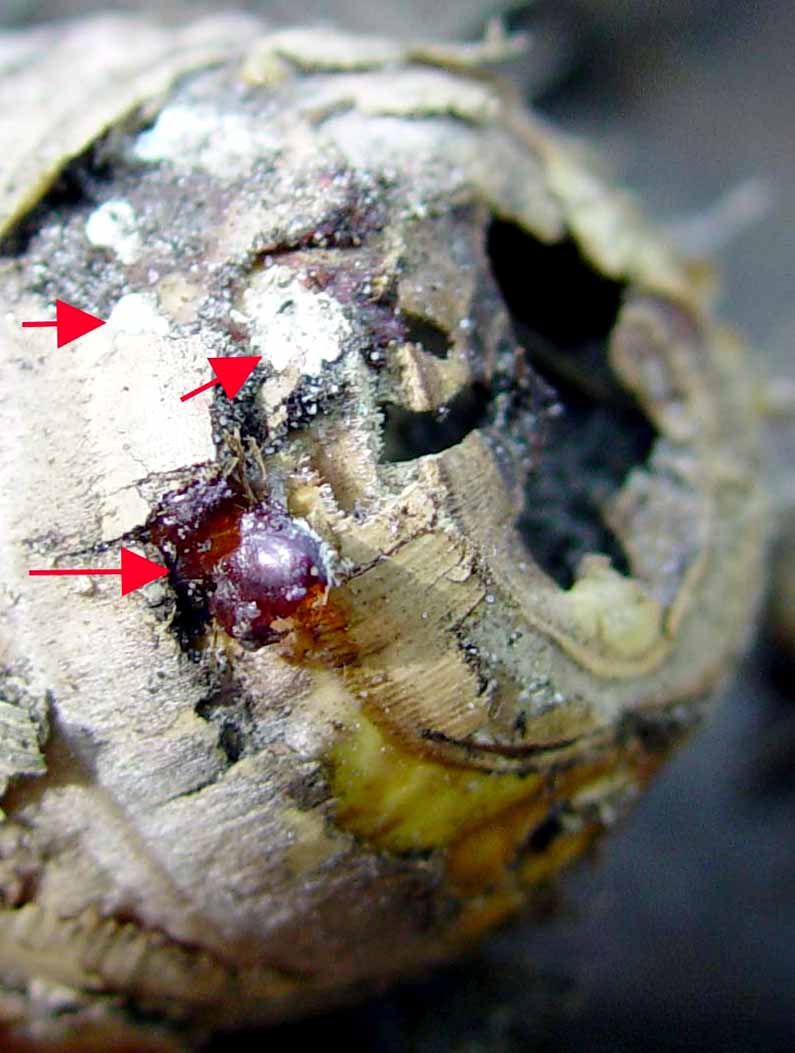Brad,needmore wrote:Roy, I initially misread your response, so you have heard others describe the thin black layer on the culms only, also as a form of sooty mold? With the same ant/aphid relational cause?
Sooty is by far the best way to describe what I see, but it looks nothing like pictures of sooty mold and I have never noticed ants or aphids hanging out or just passing through, on all of my culms.
I think the black film you are describing is primarily on temperate bamboos. As you have said, the film is on the culms and not at the branch complement, as I have described it.
Also, forget the ants and their farming techniques with aphids. What my ants are after in the branch complement of the tropical bamboos is the sweet white substance secreted by the mealy bug.
Picture 1 shows the ants at the branch complement. They are after the sweet white substance under the black sooty mold. No farm boys in these ants. Pure hunter-gatherers.
Picture 2 shows the black sooty mold removed and thus showing the sweet white mealy bug excrement. The mealy bug sucks on the bamboo, then excretes the white substance. Mold in the air collects on the white substance and grow into black sooty mold.
Picture 3 shows several mealy bugs (somewhat burnt orange in color) beneath a culm sheath. Note the white substance in the lower right hand corner of the picture (yellow arrow)
Picture 4 shows a mealy bug "Up Close & Personal"
Picture 1 Black Sooty Mold and Ants

Picture 2 White substance under black sooty mold

Picture 3 Mealy bugs under a culm sheath

Picture 4 Mealy bug extreme: Up close and personal.


